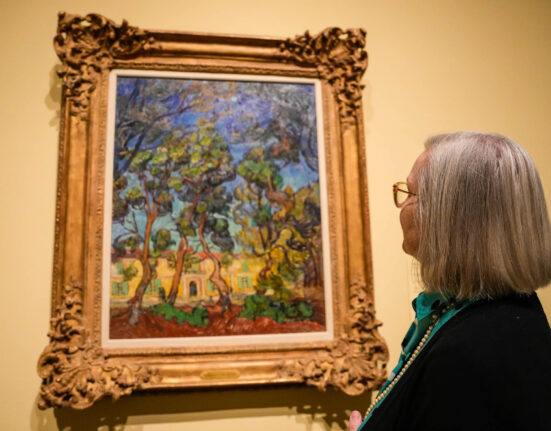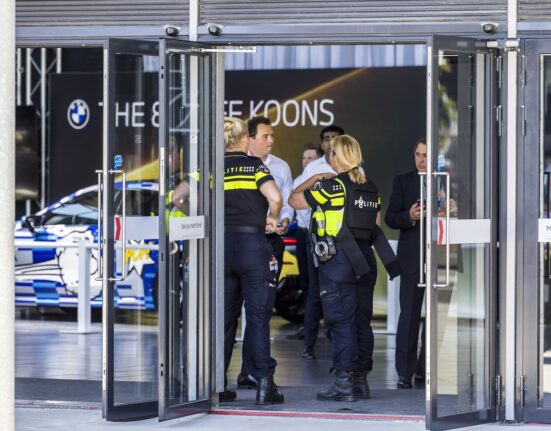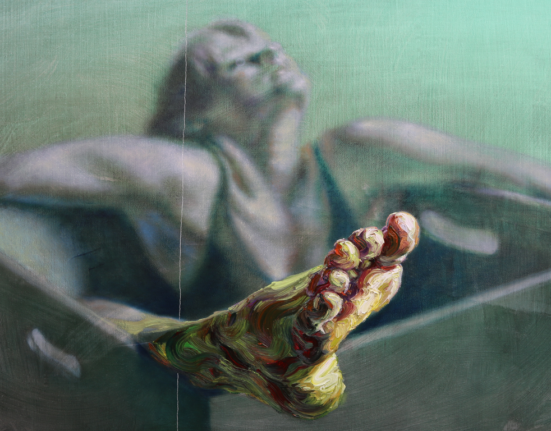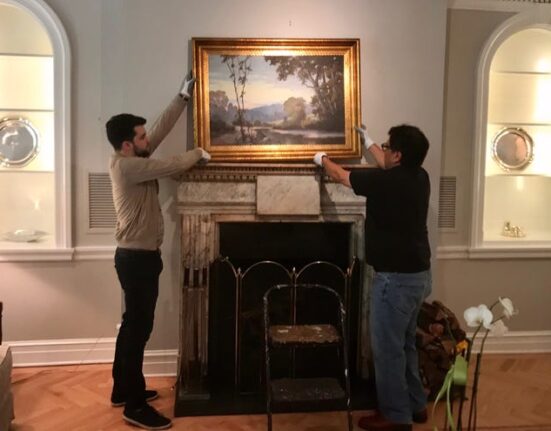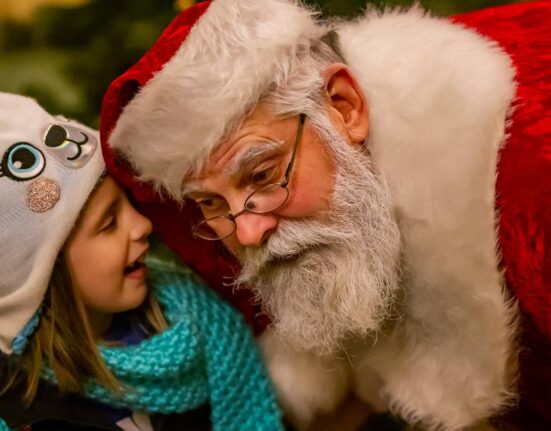Mona Kuhn’s Kings Road and the adjacent Icons exhibition of Bastiaan Woudt and George Hoyningen-Huene, both at Jackson Fine Art through August 5, are distinctly European collisions of fantasy and reality, history and imagination. But the types of collision are very different.
Kuhn moved to Los Angeles in 2005 and was transfixed by the 1922 modernist home that Rudolf Schindler had constructed as a design and social experiment that became a gathering place for the avant-garde.
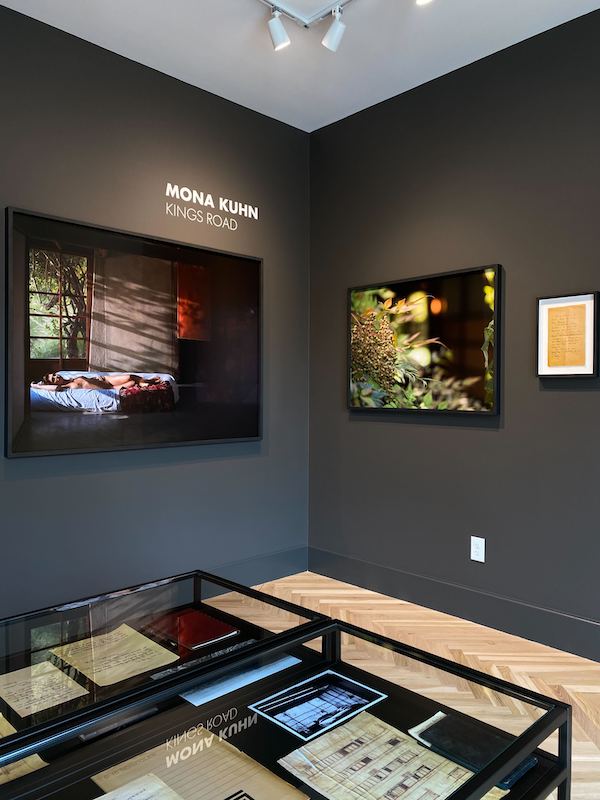
As explained at length in Jackson Fine Art’s online viewing room, in 2016, Kuhn undertook a photo project in the house. In it she imagined a haunting by an elusive spirit symbolizing the unconsummated love that Kuhn discovered in the Schindler archives: an unsent note in which Schindler discourages the attentions of an ardent female suitor.
The note, or a convincing facsimile (we aren’t told which), appears framed alongside Kuhn’s color photographs of the Schindler house. They are primarily ghostly evocations transforming details of the interior space’s geometry.
However, there is one portrait photo and one odalisque of a nude female model, representing not the ghost of the gently refused lover but the spirit of exchange and imagination that took place throughout the first decades of the house’s existence. The model recurs in a suite of solarized prints, in various poses also situated somewhere between poetry and art history.
The imaginative exchange that took place in the early decades of the Schindler House’s existence is evoked in a museum-style vitrine of original documents. They include correspondence from Edward Weston about photo projects undertaken for Schindler (in which Weston delicately refers to Weston’s tenuous financial situation) and architectural drawings of the house.
Also included is a printed postcard invitation to a 1932 talk at the house by Sadakichi Hartmann on the coming era of color movies. It reads: “You will be well entertained — After talk refreshments — Admission one dollar.”
The Jackson Fine Art online viewing-room description of this installation, plus video documentation of how it was previously presented in an art center in Germany, makes clear that Kuhn means for the viewer to interact imaginatively and emotionally with this display of photographs and documents as a point of entry — not just to understand but to feel the charged atmosphere of the Schindler house.
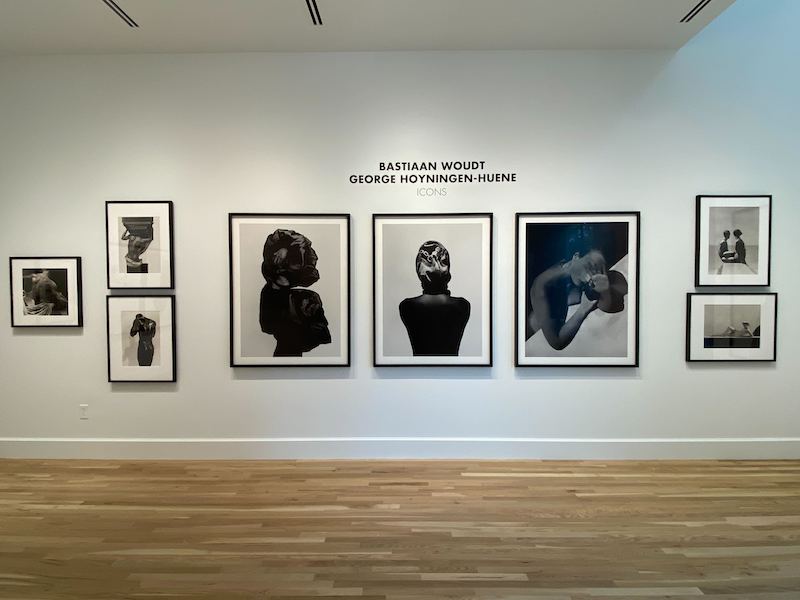
A problem arises when viewers encounter the installation cold; some visitors who were uninformed of the exhibition’s premise have experienced confusion instead of imaginative encounter. The difficulty is compounded by the lack of any indication in the gallery itself that the edifying web page exists; the QR code on the wall leads only to the exhibition checklist.
The same prior orientation would greatly help the viewer’s experience of the intermingled photographs by Woudt and Hoyningen-Huene. Woudt’s new works are responses to the overall aesthetic of Hoyningen-Huene’s fashion photography of the 1920s and 1930s, including a memorable 1929 portrait photo of Josephine Baker.
But again, the prep work is left completely up to the viewer. Not all of it is available on the website. How the project evolved at the invitation of Jackson Fine Art owner Anna Walker Skillman has, to my knowledge, been explained only orally. The online exhibition description limits historical context to a brief remark on the influence of surrealism on both photographers — directly in the case of Hoyningen-Huene, “who worked with Man Ray and photographed for Elsa Schiaparelli.”
This is, perhaps, appropriate for a gallery exhibition, in which the emphasis is on the works themselves rather than on their history. Curious viewers can easily acquire adequate historical context about both photographers on the internet.
It illustrates, though, the ongoing difficulty that all commercial galleries face in terms of contextualizing the artworks they present. In practice, much information is conveyed orally in the one-on-one encounter between viewers and gallery staff. Galleries are not museums and can provide only limited information in the gallery space. In the case of this exhibition, even the information that many galleries provide in a gallery book or leaflet is available only on the website.
Critics can elaborate further on historical backgrounds. The question is, should they, when the artists themselves state that they want viewers to interpret the work in any way they see fit?
::
Dr. Jerry Cullum’s reviews and essays have appeared in Art Papers magazine, Raw Vision, Art in America, ARTnews, The International Review of African American Art and many other popular and scholarly journals. In 2020, he was awarded the Rabkin Prize for his outstanding contribution to arts journalism.


